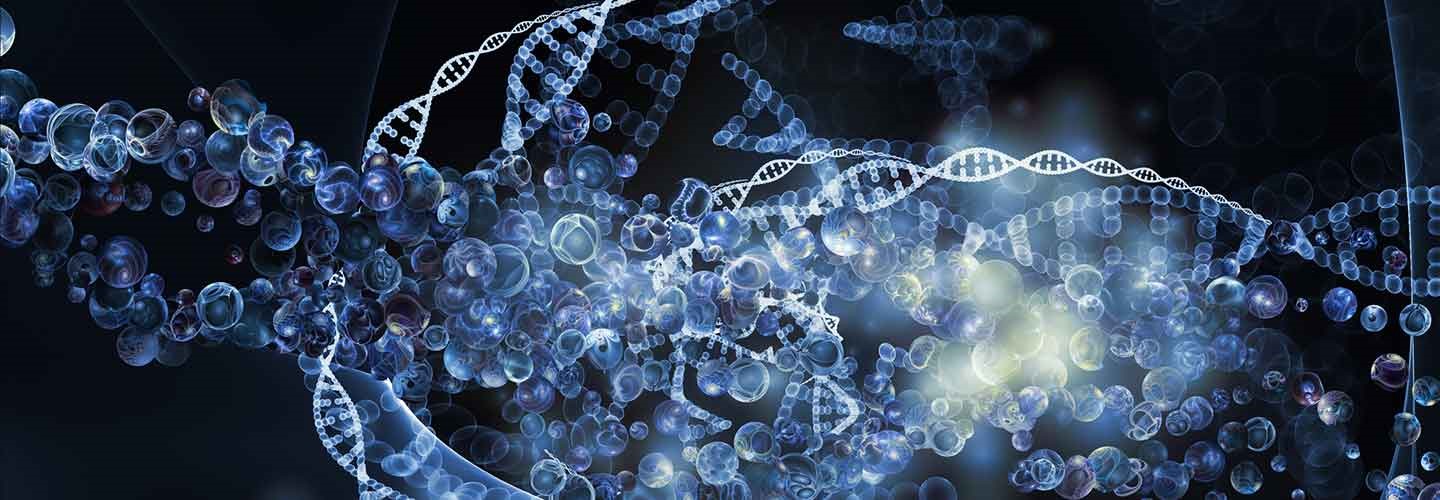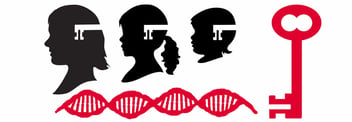DNA: I Am Who I Am… or Am I? – Session Fifteen
- Home
- Blog

Help Prevent Medication Side Effects with Genetic Testing
The CYP450s: Your Body’s Information Processing System
Reader, welcome to the first days of summer! Memorial Day has passed, the pools are open, and the kids are out of school. Although my children are grown now, I can still vividly recall what it felt like to be a parent with two young children, peering uncertainly into what felt like the thousand hot summer days and balmy nights ahead of us. Often these first days were full of planning. My wife and I would sit down at the table and think of all the ways we might try to fill our daughters’ time: with camps, pool parties, required reading, and weekend trips—all underpinned with just the right amount of relaxation and fun. I genuinely miss those wonder years! With every summer that passed, we came to understand more and more the importance of just the right amount of structure mixed in with spontaneous free-play and creative arts. As soon as the threat of serious boredom crept in, we knew we were in trouble: the goal was to avoid under-stimulation at all costs. But, if you’re a parent, you know not all kids are created equal when it comes to that all-pervasive threat. Some need more stimulating activities, while others crash under the weight of over-scheduled time and need more time just to chill-out. Picture this: You have two young kids about to dive into their summer break. Your first kid—well, he has a lot of energy. You can give him a book and he reads it in one sitting, immediately asking for another. The pro: his incredible productivity is a character trait that will serve him well for years to come. The con? If he finds himself bored, you might just find your whole house turned upside down. Chaos ensues! Your second kid—she’s the opposite. She takes her time with that first book you give her, and if you give her another one before she’s finished, she will undoubtedly feel overwhelmed. Ask her to do a chore on top of that, and you may have tears. The pro: she’s almost never bored. The con? If you overstimulate her with activity, she’ll crash, and it won’t be pretty.
You see, our brains process information at different paces—and our bodies are no different. And this week, I want to introduce you to the genes responsible for processing the “information” that we give our bodies to make our brains feel better—the genes that code for the manufacture of enzymes that break down or metabolize medications that treat anxiety, depression, mania, ADHD, and other emotional conditions. These enzymes (and the genes that code for them) are known as the “Cytochrome P450 System.”
Pharmacodynamics versus Pharmacokinetics: Why the CYP450 Genes are Different
Thus far, we’ve explored each gene introduced in my “DNA: I Am Who I Am, Or Am I?” through the lens of “pharmacodynamics,” or how drugs affect the functions of neurons, synapses and circuits in our brains, (related to how our genes determine their structure and function), and how variations on those genes can help to determine which drugs will be most successful. Through this lens, we’ve also discussed how certain genetic variants may predispose us to medications that will lack effectiveness and be more likely to produce side effects and adverse reactions, like weight gain or addiction. For instance, individuals with certain variations of their SLC6A4 gene may exhibit a reduced reuptake of serotonin—a neurotransmitter involved in mood regulation—and are more likely to have a poor response to many common antidepressant medications known as SSRIs. Similarly, variants on the 5HT2C and MC4R genes might leave individuals at risk for adverse side effects, like weight gain, when taking antipsychotics. COMT can influence your reaction to stress; DRD2 can predispose you to opioid addiction. The genes themselves may be different, but the bottom line we’ve always returned to has remained the same: By understanding the biological mechanisms controlled by our genes and how certain medications interact with these mechanisms, we can have a greater impact on our destiny.
Today, however, we’re going to be talking about a particular gene family through a different lens, a “pharmacokinetic” lens. Whereas pharmacodynamics explores how drugs affect physiological functions (the functions of cells and body-systems), pharmacokinetics flips the script, instead focusing on how our bodies can impact the drugs themselves—more specifically, how our bodies determine how fast or slow medication is metabolized and degraded to an inactive form. Cytochrome P450 genes play a massive role in how our bodies digest the medication we feed it. With that in mind, let’s dig into the genes themselves!
CYP450s: Your Body’s Processing Genes
Cytochrome P450, or CYP450, genes are a superfamily of genes that code for the manufacture of enzymes that live in the parts of our bodies that are responsible for metabolic processes—this includes the liver, small intestine, kidneys, brain, and lungs. The CYP450s are crucial in the metabolizing a number of psychopharmacological (or psychotropic) drugs—the “brain drugs” we are prescribed that have an impact on our consciousness, mood, behavior, or cognition. In fact, 70-80% of those medications are processed exclusively by the CYP450s. Reader, that’s a significant percentage—and indeed, variations on our CYP450 genes can have a significant impact on how medications are processed through our bodies.
Let’s return now to those two kids on the verge of their summer break. Like those kids, our bodies can have a few different variations when it comes to metabolizing drugs. These variations typically fall into four different categories: Extensive/Normal (EM), Intermediate (IM), Poor (PM), or Ultrarapid (UM) metabolizers. If you are a UM metabolizer, your body processes the “information” of your medication extremely fast—in other words, your body is like the kid who can read a whole book in one sitting . And just like that kid needs another book pronto, so does your body with its medication. Because you’re so speedy with your metabolic processes, it may be difficult to achieve a so-called “therapeutic blood level” at the usual dosage, and therefore you may need a higher dosage of the medication to benefit from its therapeutic effects. If you’re an IM or PM, on the other hand, your body processes that same information more slowly—you’re the kid that takes her time. And if you give your body more medication than it can process, side effects and adverse events can be amplified because the blood levels of the medication, even at the usual prescribed dosage, rise rapidly to unacceptable heights. Accordingly, you may need a lower dosage.
CYP450 Genetic Testing: How It Can Help
When it comes to dosage concerns, too many prescribers rely on a system of trial and error. If the usual prescribed dose turns out to be too high, a patient can have serious side effects. If the dose is too low, the patient may not see any effects at all—doctor and patient concluding that the medication is the wrong choice—and this may even lead to erroneously prescribing a different medication altogether instead of simply raising the dose. Reader: I believe that patients shouldn’t have to put up with this, as it delays recovery and increases the risk of side effects, and may add to a sense of hopelessness that one will ever recover from their illness. They just don’t have time to experience months of experimentation before seeing results. It can ultimately lead to consequences that can have a lasting and damaging impact on an individual’s wellbeing, and lead them to resist or refuse help in the future.
With this in mind, when it comes to precision medicine, getting a genetic test to help you and your doctor understand your metabolic processes—and the variants of CYP450 genes that code for those processes—is a no-brainer. Genetic tests like the Genomind Pharmacogenetic (PGx) Test can give you the information and understanding you need to move forward with the right kind of treatment—so you can begin to feel better not a year from now, not six months from now, but starting today.
I’m committed to doing whatever it takes to help my patients take control of their future. Genetic testing is a mission-critical part of that commitment, and I’ve seen countless positive results through my administration of precision medicine anchored in genetic testing. If you’re tired of the trial-and-error process of finding the right drug or the right dosage, I recommend you take a genetic test as soon as possible, through a doctor that can interpret the results and more precisely prescribe the right medications for you!
DNA: I Am Who I Am… or Am I? Blog Series
- Does DNA Determine My Destiny?
- Tinker with Your Genes to Determine Your Destiny
- A Simple Cheek Swab Brings Good Karma
- Test Your DNA to Determine Your Reality
- The BDNF Gene: Use “Fertilizer” to Grow a Majestic ”Rainforest Brain”… and Introducing “GENiE” and “DNA 4 KIDS”
- The MTHFR Gene: “Manufacture” Your Way to Health and Happiness Featuring “DNA 4 KIDS” with “GENiE”
- The SLC6A4 Gene (Serotonin Reuptake Gene): Improve Your Mood and Anxiety through a Simple Cheek Swab Featuring “DNA 4 KIDS” with “GENiE”
- Tame that Emotional Roller Coaster Ride Genetic Testing for the ANK3 Gene and CACNA1C Gene Featuring “DNA 4 KIDS” with “GENiE”
- Is Addiction Inherited? Genetic Testing for the OPRM1 Gene, Opioid Abuse, and Alcoholism Featuring “DNA 4 TEENS” With “GENiE”
- Surf’s Up: Use Your Genetic Code to Ride the Stress Wave with Ease The COMT Gene Featuring “DNA 4 KIDS” With “GENiE”
- Mental Illness is not a Myth—and Human Genomics Proves It The DRD2 Gene and Dopamine Featuring “DNA 4 KIDS” With “GENiE”
- ADHD in the Age of Distraction The Tricky Genetics behind ADHD and ADRA2A Featuring “DNA 4 KIDS” With “GENiE”
- Overweight and Obesity – Is it Me, or My DNA? 5HT2C and MC4R: Can Your Genes Make You Fat?
- Is Alcoholism Inherited? Can a Tiny Gene Help Treat It? The GRIK1 Gene
- 2018 Women’s Health and Wellness Summit DNA Keynote Address
Related Information
- Learn about Genetic Testing
- Learn about Potomac Psychiatry
- Meet Our Doctors
- Contact Potomac Psychiatry
.png?width=144&height=144&name=Untitled%20design%20(34).png)



